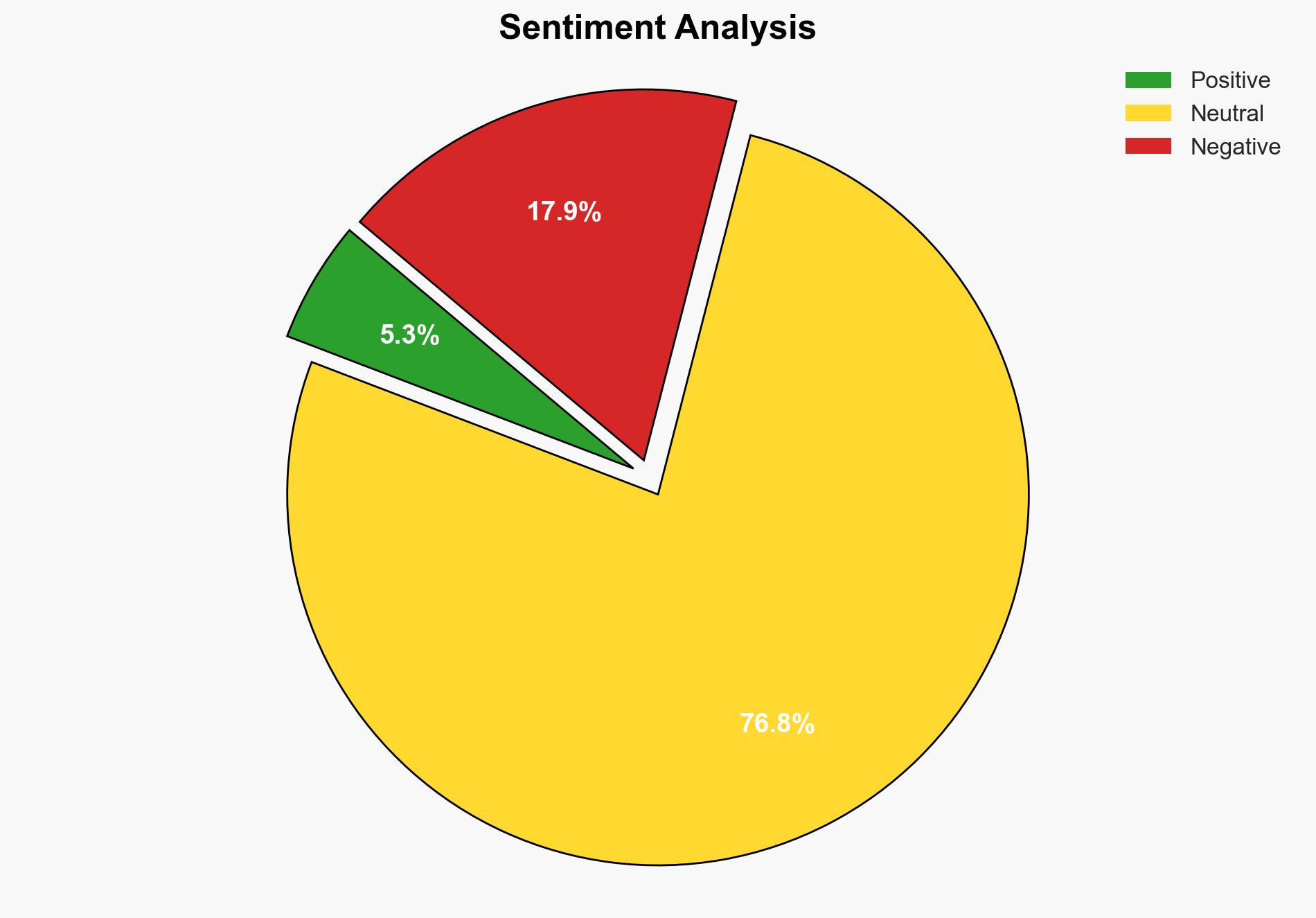Poland says Russia likely behind railway sabotage attack – CBS News
Published on: 2025-11-18
AI-powered OSINT brief from verified open sources. Automated NLP signal extraction with human verification. See our Methodology and Why WorldWideWatchers.
Intelligence Report:
1. BLUF (Bottom Line Up Front)
With a moderate confidence level, the most supported hypothesis is that the railway sabotage in Poland was orchestrated by Russian actors, potentially with the involvement of Ukrainian citizens working for Russian interests. This incident represents an escalation in hybrid warfare tactics by Russia against NATO member states. Recommended actions include increasing security measures on critical infrastructure and enhancing diplomatic efforts to address Russian aggression.
2. Competing Hypotheses
Hypothesis 1: The sabotage was conducted by Russian operatives, possibly in collaboration with Ukrainian citizens, as part of a broader strategy of hybrid warfare against NATO countries. This is supported by Poland’s accusations and the historical context of Russian tactics.
Hypothesis 2: The sabotage was perpetrated by non-state actors or rogue elements within Ukraine or Russia, aiming to provoke tensions between Poland and Russia. This hypothesis considers the possibility of false flag operations or independent extremist actions.
Hypothesis 1 is more likely due to the strategic nature of the attack, targeting critical infrastructure and aligning with Russia’s known methods of exerting pressure on NATO members.
3. Key Assumptions and Red Flags
Assumptions include the reliability of Polish intelligence and the assumption that Russia has the capability and intent to execute such operations. Red flags include potential bias in Polish reporting due to historical tensions with Russia and the possibility of misattribution in a complex geopolitical landscape. Deception indicators could involve misinformation campaigns by Russia to obfuscate their involvement.
4. Implications and Strategic Risks
The incident could lead to increased tensions between NATO and Russia, potentially escalating into broader conflicts. Cyber threats and economic sanctions could follow, impacting regional stability. The sabotage highlights vulnerabilities in critical infrastructure, necessitating enhanced security measures. Informational warfare could intensify, with both sides using media to shape narratives.
5. Recommendations and Outlook
- Enhance surveillance and security protocols on critical infrastructure, especially near borders.
- Strengthen diplomatic channels with NATO allies to coordinate a unified response to Russian aggression.
- Increase intelligence-sharing with neighboring countries to monitor potential threats.
- Best-case scenario: Diplomatic efforts lead to de-escalation and increased security cooperation among NATO members.
- Worst-case scenario: Further acts of sabotage lead to military confrontations or severe economic sanctions.
- Most-likely scenario: Continued hybrid warfare tactics by Russia with periodic escalations and diplomatic tensions.
6. Key Individuals and Entities
Donald Tusk (Polish Prime Minister), Radek Sikorski (Polish Foreign Minister), Maria Zakharova (Russian Foreign Ministry Spokeswoman).
7. Thematic Tags
Structured Analytic Techniques Applied
- Cognitive Bias Stress Test: Expose and correct potential biases in assessments through red-teaming and structured challenge.
- Bayesian Scenario Modeling: Use probabilistic forecasting for conflict trajectories or escalation likelihood.
- Network Influence Mapping: Map relationships between state and non-state actors for impact estimation.
Explore more:
National Security Threats Briefs ·
Daily Summary ·
Support us





